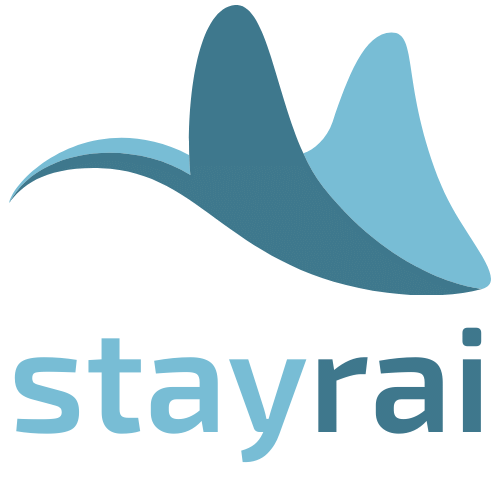User Manual
Stayrai User Manual v1 - April 2024 | For the app configuration click here.
1. Product Overview
Stayrai is the smartest way to keep aquariums. Stayrai performs fully automated water changes, fills up your reservoir (the extra bucket you have for fresh water), controls your heaters/coolers for perfect temperature control, doses additives for your corals conditioners or fertilizers for your plants, and a lot more.
In this section we provide a quick overview of Stayrai components.
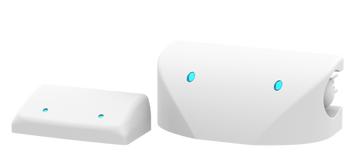
Stayrai Units
This unit is the main module that controls all the parts.
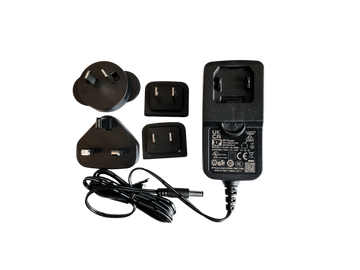
Universal Power Adaptor
This universal adaptor is used to power up Stayrai units. You will find the right plug bit for your region in the package.
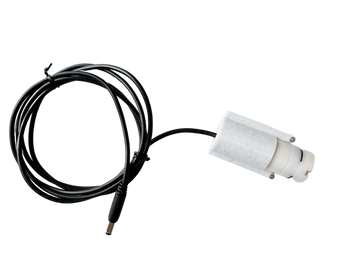
Water Change Pump
This pump is in charge of pumping old water out of your tank into the waste.
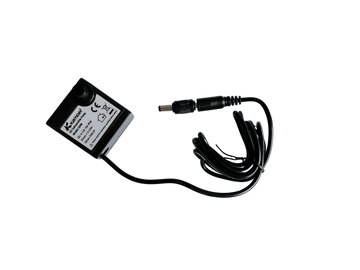
Reservoir Pump
This pump is in charge of pumping fresh water into your tank from your water reservoir.
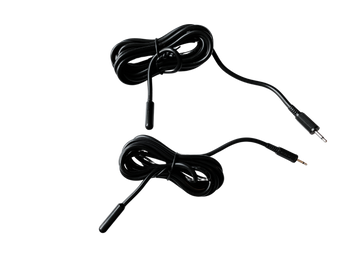
2 x Temperature Sensors
(Not included for water change essential package)
These sensors monitor temperature in your main tank and your reservoir.

2 x Optical Water Level Sensors
These sensors ensure the maximum water level for your main tank and reservoir.
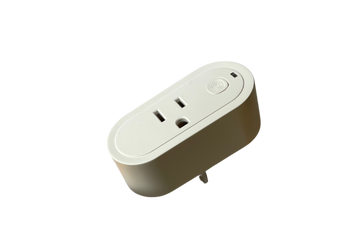
Smart Wifi Power Relay(s)
(Not included in water change essential packages)
This module controls electricity to your aquarium appliances such as heaters, lights, etc. Depending on your order you may have up to two relay modules in your package. Additional modules can be purchased.
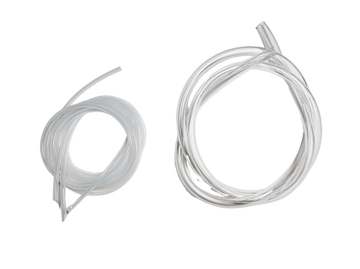
Tubes
2 meters 10mm PVC Tube for your reservoir pump
2 meters 6mm silicon tube for your water change pump
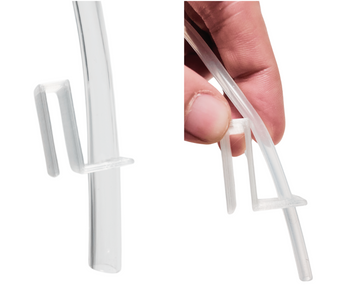
2 x Tube Holders
2 tube holders to get you started with your setup.
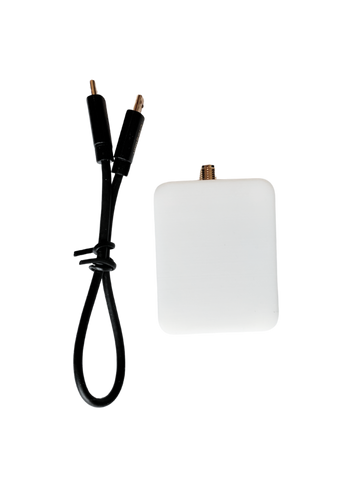
Add-On Modules (pH, ORP, Salinity, etc.)
Included only if you ordered add-on modules. These modules enhance your unit's capability to monitor additional measurements, such as pH or ORP, in your tanks.
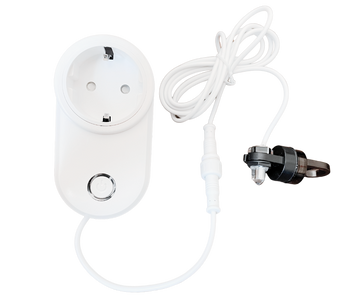
Secondary Water-Overflow Protection Module
2. Setup and Installation
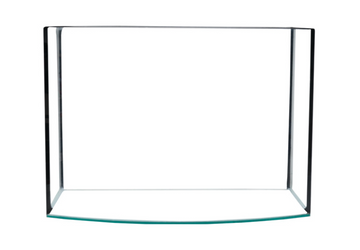
You need a bucket or an empty tank to be used as reservoir. This is not included in the set as the size of the reservoir depends on your aquarium and the space you have around your aquarium. You want to place this bucket preferably close to your aquarium and the Stayrai controller (best to be placed inside your aquarium cabinet).
2.1 Stayrai Controller Port Guide
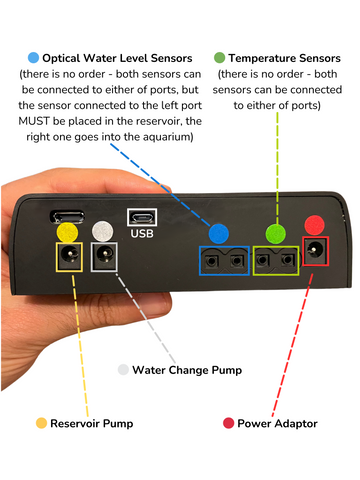
The same port layout for both Lite and Rein Product lines.
2.2 Component Installation
In this section we demonstrate how each component is connected to Stayrai units.
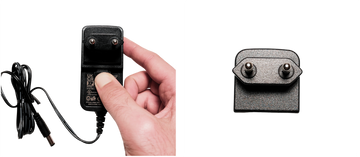
1. Pick the right interchangeable plug from the supplied plugs.
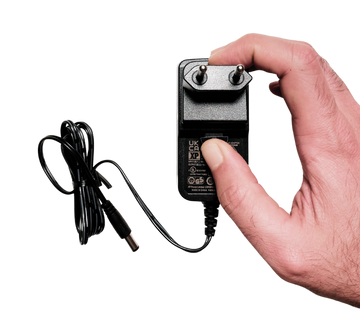
2. Snap it into the Power Adaptor from the top as shown in the picture.
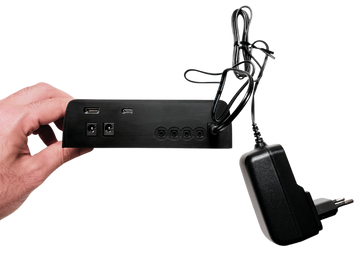
3. Plug the Power Adaptor to the designated port.
(Warning: do not connect the plug to the electricity yet!)
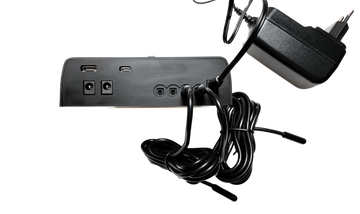
4. Plug the Temperature Sensors in to the designated ports.
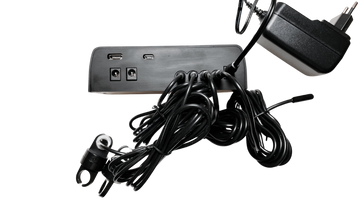
5. Plug the Optical Sensors in as depicted.
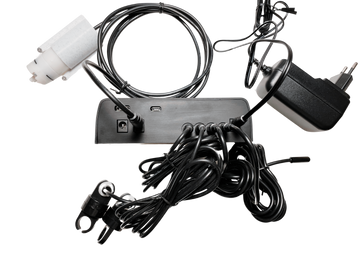
6. Plug the Water Change Pump.

7. Plug the Reservoir Pump.
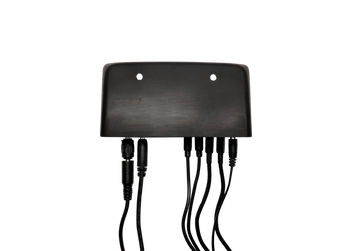
8. Remove cable ties and place each sensor and each component in their right place.
2.3 Final Setup
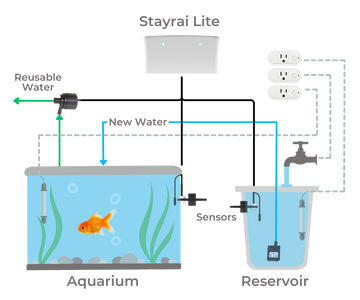
Now, we proceed with the reservoir and aquarium setup, guiding you through each step. The final setup will resemble the diagrams provided for the Lite and Rein units.
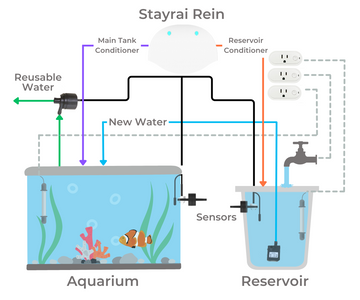
The Rein model comes with two built-in dosing pumps. In this example, we used one of the pumps to dose tap water conditioner (dechlorinator) and the second pump for plant fertilizer, such as liquid CO2. In your setup, you may use the pumps to dose any additives your tank requires.
2.4 Reservoir Setup
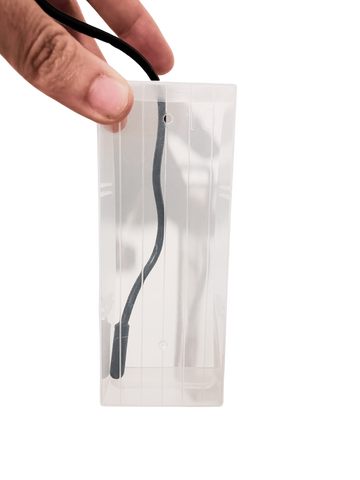
1. Submerge a temperature sensor into your reservoir. Ensure that it will be located under water so it can measure the temperature correctly.
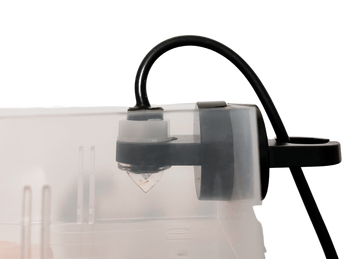
2. Place an optical sensor on top of your reservoir marking the maximum water level of your reservoir.
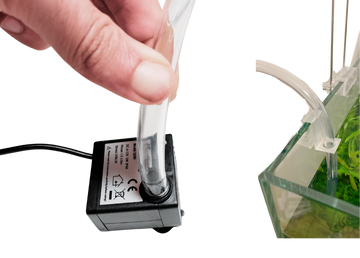
3. Place reservoir pump inside your reservoir and connect the hose from the reservoir to your aquarium (maximum 2m height can be supported). Use the hose holder provided in the package to fix the hose. If the hose holder doesn’t match your style feel free to replace it with a 10mm aquarium inlet.

4. Plug the overflow protection module into electricity. Fix the optical water level sensor on top of your reservoir (slightly over your standard optical water level sensor that is connected to Stayrai controller). Now, make sure to connect your solenoid valve to this overflow protection module (instead of directly plugged into electricity). In case of failures, the protection module cuts electricity stopping the inflow of excessive water into your reservoir preventing hazards.
2.5 Aquarium Setup
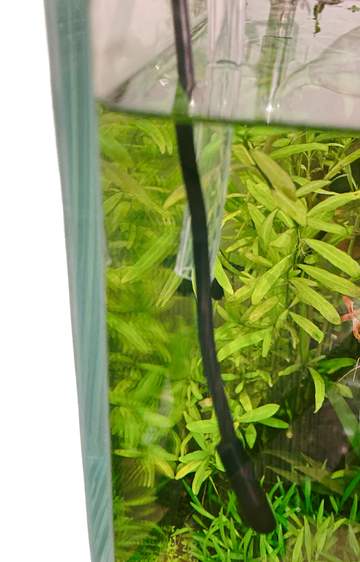
1. Place a temperature sensor inside your aquarium. Ensure that the temperature sensor is submerged in your tank so it measure the water temperature.
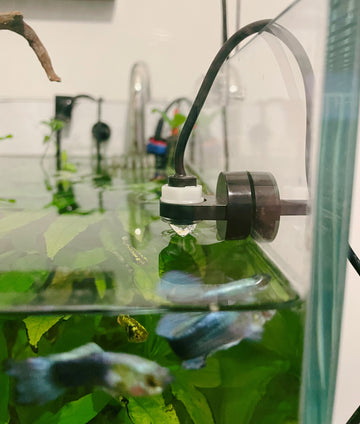
2. Place an optical sensor on top of your aquarium marking the maximum water level of your aquarium.
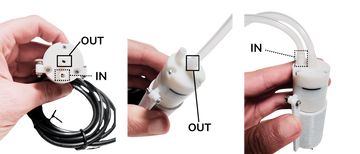
3. Connect the tube to your water-change pump tubing the aquarium to the waste. Use the sharp scissor or a cutter to split the water-change tube. The tube connecting your aquarium to the water-change pump must be connected to the IN fitting. The OUT fitting must connect the tube to waste.
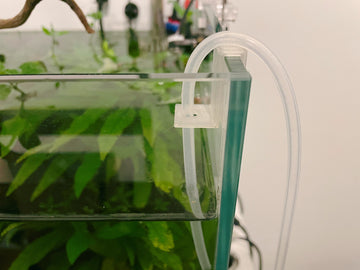
4. Use the tube holder provided in the package, or purchase a 6mm aquarium outlet to secure the tube to your aquarium. NOTE: Ensure the tube is submerged 5-10cm into your aquarium, as it will siphon water out of your tank.
CAUTION: If you have small animals that could be drawn into the 6mm diameter tube, you must acquire a safe inlet cover for your tube.
2.6 Setup Your Add-on Module
(Only if you ordered add-on modules)
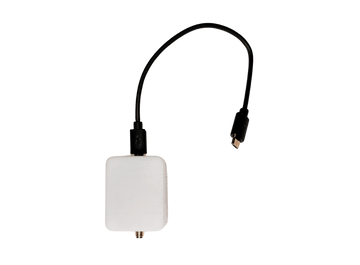
1. First connect the USB Cable to the module.
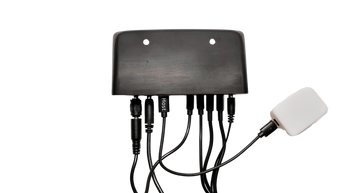
2. Then connect the module to the unit’s micro USB port.
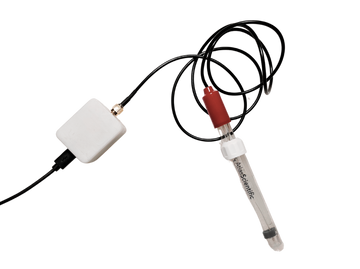
3. Lastly connect the probe to the Add-on Module.
4. Place the probe inside your aquarium (you can submerge the probe). The module box must stay in the dry and secured from any water splashes.
2.7 Smart Wifi Power Relay
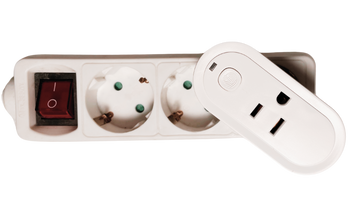
1. Connect you power relays to electricity.
2. Connect your heater and solenoid valve to the relay modules (more on this in the app setup manual).
3. Plug the power adaptor to electricity to turn the device on
3. Maintenance
To ensure optimal performance and longevity of your system, regular maintenance is crucial:
- Descale optical sensors every 3 months to prevent buildup and ensure accurate readings.
- Descale your pumps every 6 months to maintain their efficiency and reliability.
- Descale your temperature sensors every 6 months to prevent mineral deposits from affecting their functionality.
Adhering to this maintenance schedule ensures your equipment operates smoothly and accurately.
4. Troubleshooting
If you faced any issues during setup - visit our FAQ page.
5. Safety and Risks
DISCLAIMER: THIS DEVICE IS CURRENTLY A DEVELOPMENT PROTOTYPE IN BETA RELEASE. USE IT AT YOUR OWN RISK. STAYRAI GMBH BEARS NO RESPONSIBILITY FOR DAMAGES. Users are advised not to leave the device unattended during operation and to fully understand and accept the associated risks before use. Ensuring your awareness and compliance with this cautionary advice is essential for your safety and the avoidance of potential damages.
Users are strictly advised to not use the automatic fill-up without a secondary overflow protection.
6. Support
If you require further support with your Stayrai device, feel free to reach out via our contact form or through email at hello@stayrai.com. Our dedicated team will assist you every step of the way.
